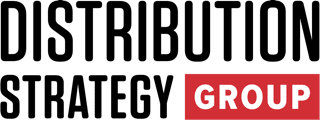I’ve spent decades inside distribution centers, warehouses, and manufacturing floors, from the loading dock to the corner office, and here’s the bottom line: if you’re leading from the floor, you’re leading. If you’re hiding behind your desk or your title, you’re falling behind.
Frontline leadership isn’t about reports and titles. It’s about earning trust, solving real problems, and keeping the operation moving day in and day out. With the faster pace of operations, rapid advancements in technology, and constant change, you can’t afford to be disconnected from your people or operations. That’s why I’m kicking off this 10-part, boots-on-the-ground series: Critical Skills for Front-Line Leaders in Distribution.
This isn’t buzzword bingo pulled from a white paper. It’s the real stuff, the kind of lessons you learn by showing up early, staying late, and listening to the people doing the work. Each part will focus on one critical skill every front-line leader needs. We start where every good leader should: operational knowledge.
Operational Knowledge of Distribution Processes
Why the Floor Beats Titles, Dashboards, and Distance Every Time
Let’s just call it out. Knowing the operation cold beats knowing the company hierarchy or obsessing over KPIs.
You can memorize reporting structures, study your dashboards, or build beautiful slide decks for your Monday ops meeting. But if you don’t know how freight flows through your building, where the friction points are, or what’s breaking down on the floor, you’re just managing noise. Operational knowledge is the backbone of leadership in distribution. It’s the difference between overseeing people and leading them.
I learned that the hard way. Fresh into leadership, I thought having the best pre-shift meeting speeches and slick PowerPoint presentations made me a good leader. I chased the title, wanted the nice office, and thought the optics mattered. But none of that helped when it came to getting the job done. When freight was backed up, when inventory didn’t match, when people were frustrated, it didn’t matter how polished my slides looked. That’s when I had to drop the show and start showing up. Lace up the boots. Walk the aisles, ask questions, and listen more than you talk. That’s when things started to change.
Have you had a moment like that in your own career? A turning point where you realized the numbers didn’t tell you what you needed, but the people on the floor did? I’d love to hear it and feature it in this series.
Mastering the Core Functions and How They Connect
A warehouse isn’t just a storage space. It’s a system. Receiving, putaway, picking, packing, shipping, returns, quality, and inventory control all must work in harmony. If one piece breaks, they all start to wobble.
Operational knowledge means you don’t just know what each team does. You understand how they affect each other. A delay in receiving throws off replenishment. Sloppy packing creates returns. If you’re managing one function without knowing the downstream effects, you’re just firefighting.
I’ve watched new managers try to fix these problems from behind a spreadsheet. Doesn’t work. You’ve got to walk the floor. Talk to the putaway team. Shadow the pickers. Watch how the packers prioritize speed over care when quotas get tight. That’s how you learn where the gaps are and how to close them.
Can you think of a time when one small issue caused a chain reaction across your warehouse? How did you find it, and what did it take to fix it? I bet others could learn from that story.
Inventory Management: Knowing Your Flow
Inventory isn’t just a number on a dashboard. It’s your operation’s oxygen supply. If the flow’s off, people can’t breathe.
Operational knowledge means you understand how different inventory flow models work—FIFO, LIFO, FEFO, JIT—and which one fits your business. But more importantly, it means you make sure the floor can execute the model you choose.
I remember a facility where we were running FEFO, but the way the warehouse was laid out made it almost impossible to make it work. We had a new product in front of an older product, which stayed buried and eventually expired. The system said we were doing it right, but the layout told a different story. I redesigned the floor, adding shorter rows specifically for the older inventory so it could stay visible and accessible. That kept it from getting buried behind new receipts. But I never would’ve figured that out from my office. They couldn’t unbury the old product and still hit their efficiency targets. I had to walk the floor and see what my team was up against.
What flow model has worked best for you, and where has it backfired? Have you ever had to change your layout, retrain a team, or rethink your system because it looked good in theory but failed in practice?
Tackling Common Fulfillment Challenges
Fulfillment is where everything either comes together or falls apart.
Missed picks, damaged product, late trucks, or returns piling up. These aren’t random. They’re all signs of deeper process failures. Operational knowledge lets you get ahead of them instead of cleaning up after them.
I remember a time when we had a rash of mis-shipped items, and the initial assumption was that the pickers were messing up. Leadership was ready to retrain or write people up. But after I spent some time in receiving, I noticed something the reports weren’t showing, a glitch in the system was printing the wrong labels and barcodes during receiving. That error flowed all the way through to picking. The pickers weren’t making mistakes; they were just scanning bad data. We fixed the root issue at the source, and the misshipments dropped off fast. That kind of problem solving doesn’t come from sitting in meetings or reading dashboards. It comes from walking the floor and seeing the process for yourself.
Have you ever dug into a chronic fulfillment issue and found the real root cause? What’s the most unexpected fix you’ve ever discovered just by being present and paying attention?
Why This Matters More Than Your Title or Your Dashboard
Let’s get real. The corner office can’t see the bottleneck.
You can sit in strategy meetings, scroll through dashboards, and prep for town halls. But none of that tells you why your pick rates are slipping, why inventory’s wrong, or why your team’s burning out. PowerPoint decks don’t fix processes. Metrics don’t move pallets. And being seen at the quarterly town hall isn’t the same as being seen in the pack-out area at 3 a.m. when a system goes down and orders are backing up.
Don’t get me wrong, being seen doing the right thing by the right people matters in your career. Visibility counts. But if you want to get recognized for the right reasons, it starts on the floor. Seeing the issues firsthand, solving problems side by side with your team, and making things work, that’s the kind of leadership that gets noticed and respected.
Here’s a question for you: When was the last time you caught something before it hit your dashboard, just because you were out there walking the floor? Those are the stories I want to surface and share.
Operational knowledge isn’t optional. It’s the foundation.
It’s how you build credibility. It’s how you lead without micromanaging. It’s how you make decisions that work. The floor is where the truth lives, and if you want to lead well in distribution, that’s where you need to spend your time.
This is the first article in my Critical Skills for Front-Line Leaders in Distribution series. Over the next nine, I’ll break down more essentials: communication, coaching, problem-solving, labor planning, data fluency, and more. We’ll talk about what works and what gets in the way, without the fluff.
And I want to hear from you.
What lessons have you learned from walking the floor that no report ever taught you? What’s a moment you earned someone’s respect by being present and useful, not just in charge?
Let’s make this a conversation that helps the next generation of leaders do the job right.
With over 25 years of leadership in supply chain, logistics and global distribution strategy, Will Quinn is a recognized authority in warehousing and distribution operations. A U.S. Marine Corps veteran, he spent 12 years mastering discipline, adaptability and leadership — qualities that have fueled his success in managing high-impact distribution networks for companies like Grainger, Coca-Cola, MSC Industrial Supply, WEG Electric and Cintas. As a former global distribution strategist at Infor, he spent four years helping businesses bridge the gap between cutting-edge technology and real-world distribution challenges. Will holds a Master of Science in Supply Chain Management from Elmhurst University.


